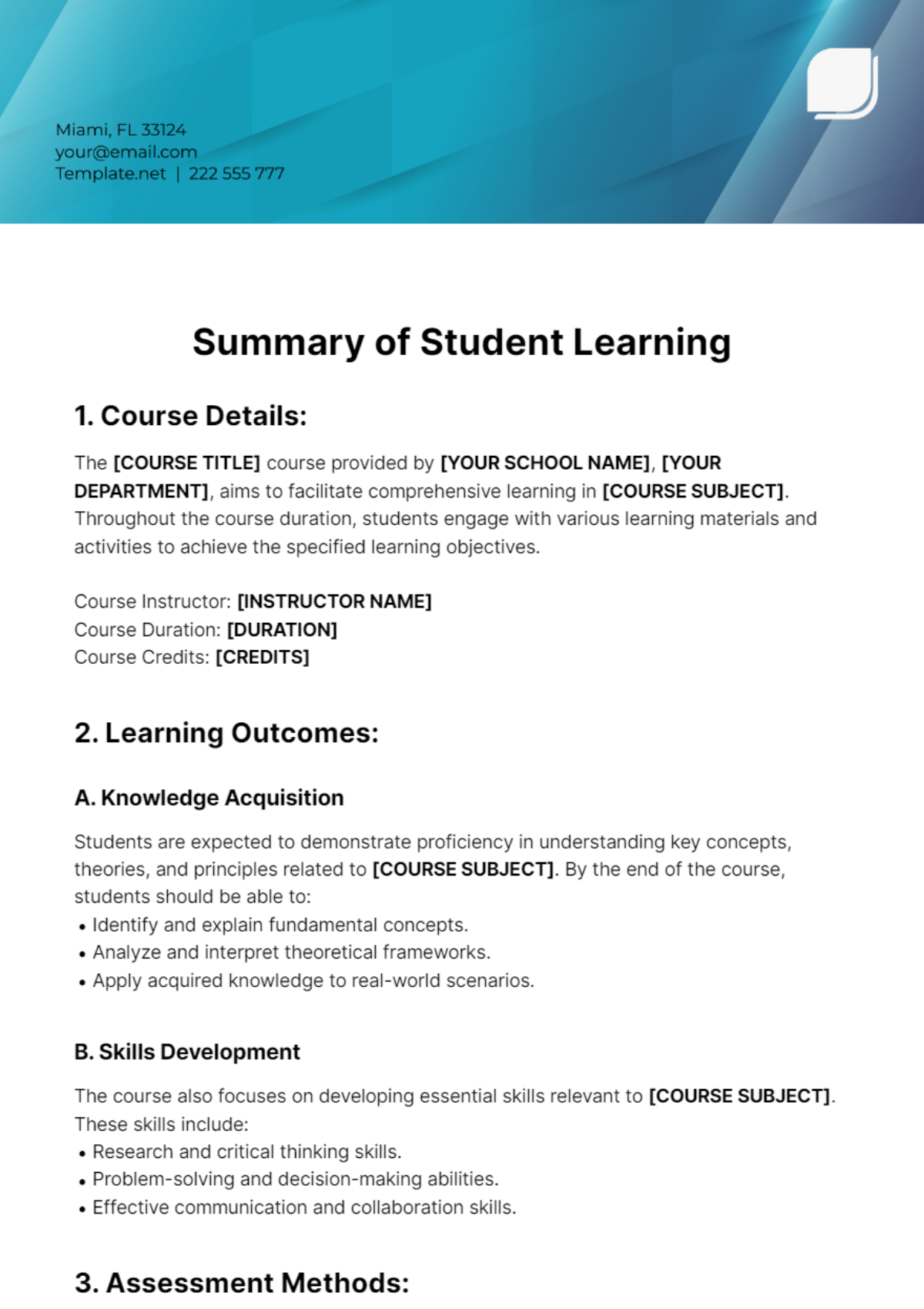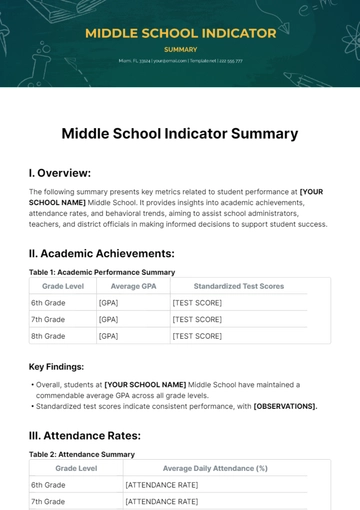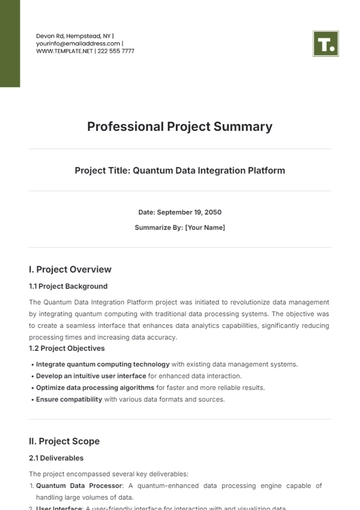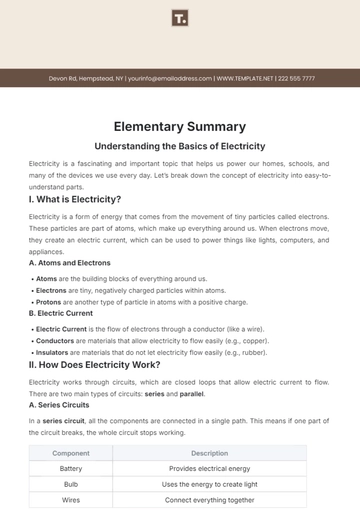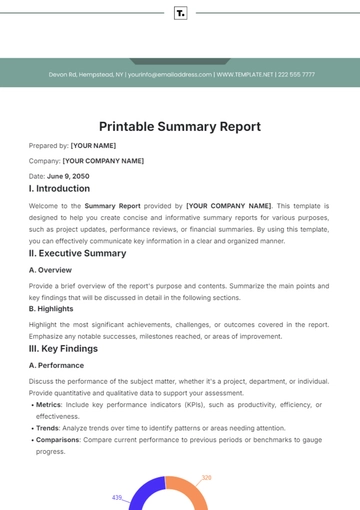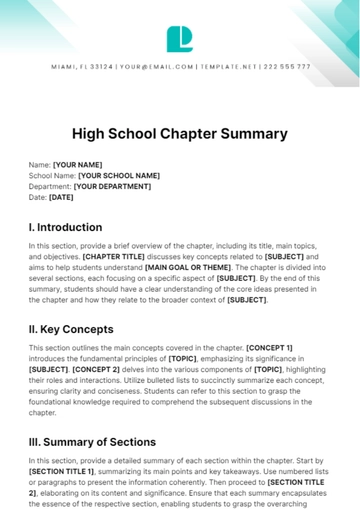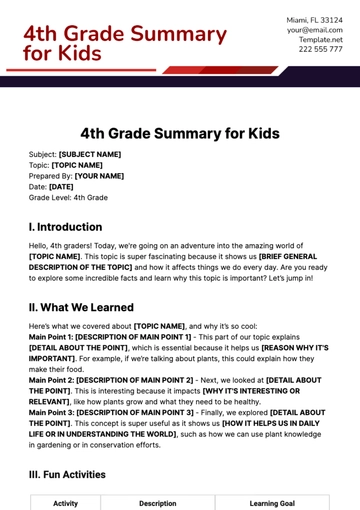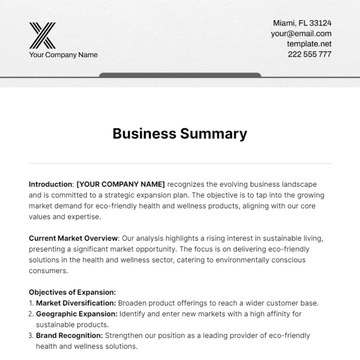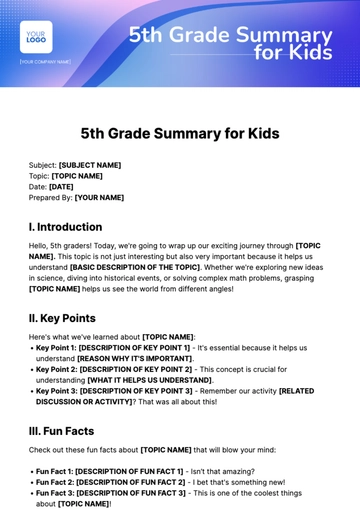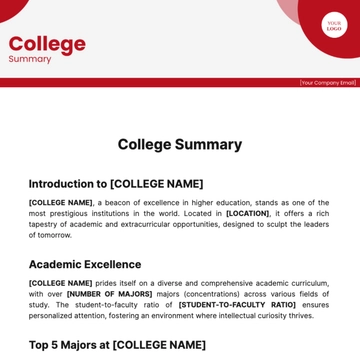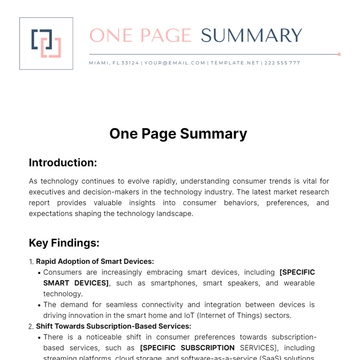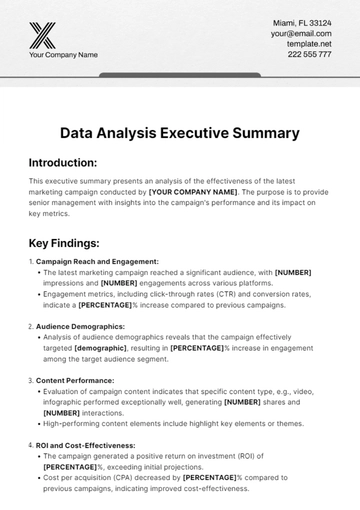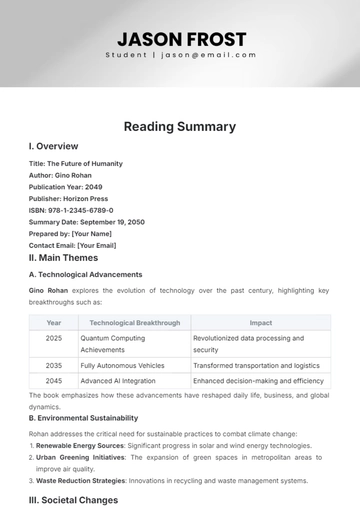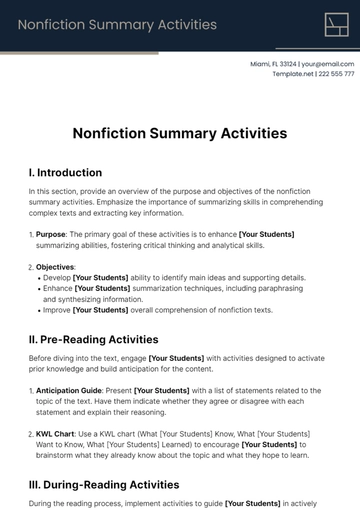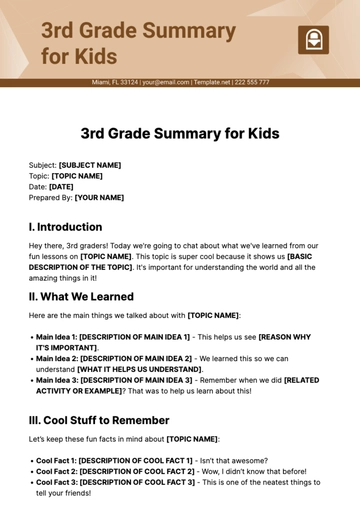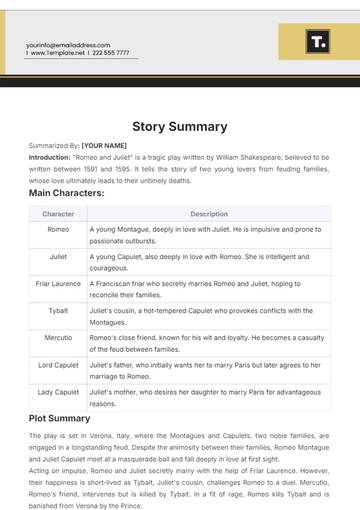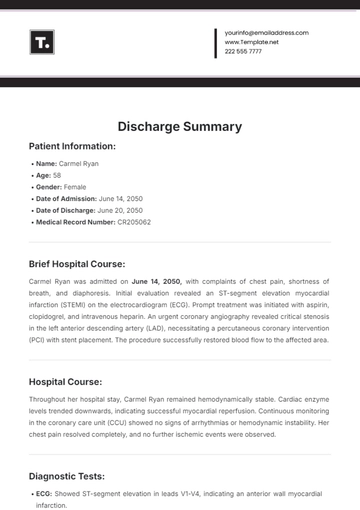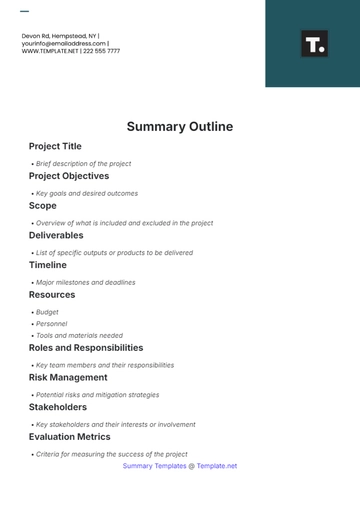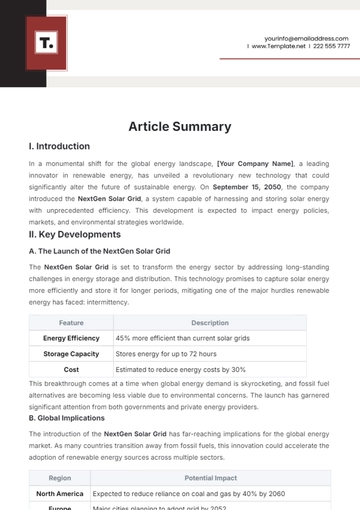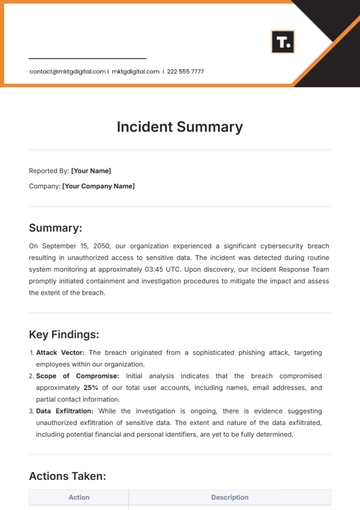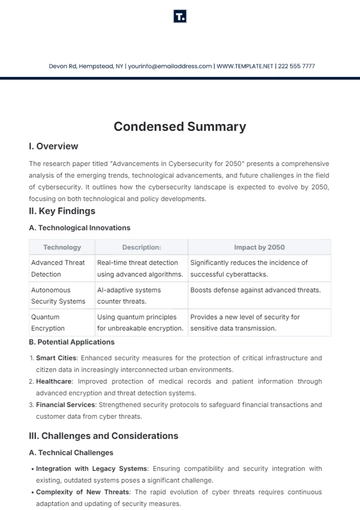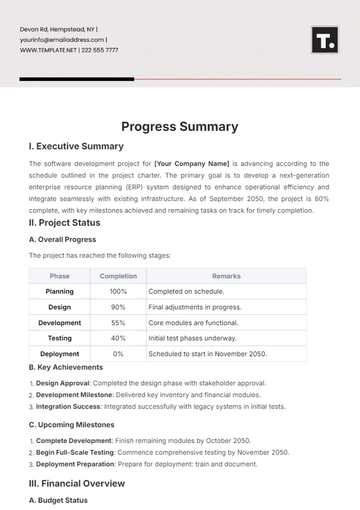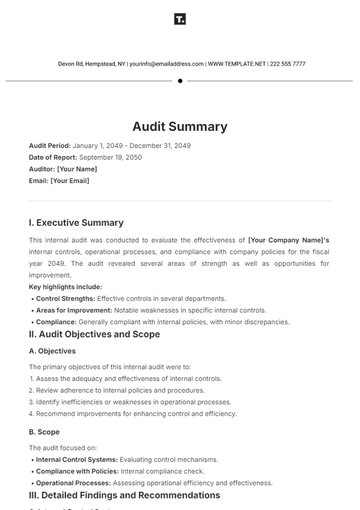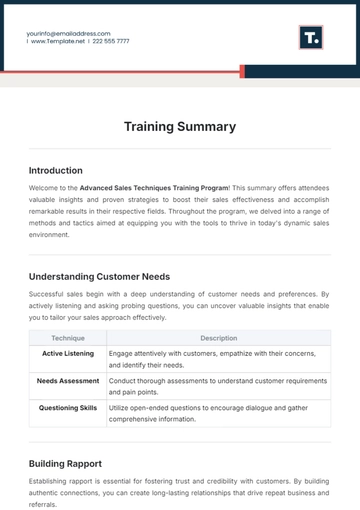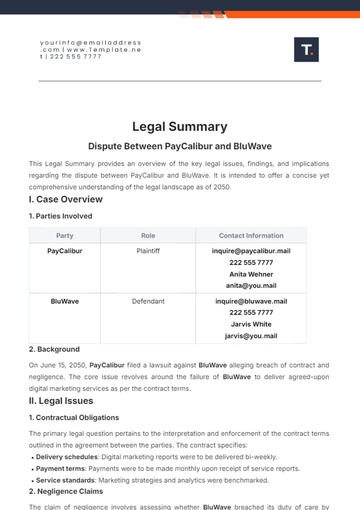Summary of Student Learning
1. Course Details:
The [COURSE TITLE] course provided by [YOUR SCHOOL NAME], [YOUR DEPARTMENT], aims to facilitate comprehensive learning in [COURSE SUBJECT]. Throughout the course duration, students engage with various learning materials and activities to achieve the specified learning objectives.
Course Instructor: [INSTRUCTOR NAME]
Course Duration: [DURATION]
Course Credits: [CREDITS]
2. Learning Outcomes:
A. Knowledge Acquisition
Students are expected to demonstrate proficiency in understanding key concepts, theories, and principles related to [COURSE SUBJECT]. By the end of the course, students should be able to:
Identify and explain fundamental concepts.
Analyze and interpret theoretical frameworks.
Apply acquired knowledge to real-world scenarios.
B. Skills Development
The course also focuses on developing essential skills relevant to [COURSE SUBJECT]. These skills include:
Research and critical thinking skills.
Problem-solving and decision-making abilities.
Effective communication and collaboration skills.
3. Assessment Methods:
A. Formative Assessment
Throughout the course, students are engaged in formative assessment activities to monitor their progress and understanding. These may include:
Quizzes and short assessments.
Class discussions and group activities.
Homework assignments and mini-projects.
B. Summative Assessment
At the end of the course, students undergo summative assessments to evaluate their overall learning outcomes. These assessments may include:
Final exams or assessments.
Research papers or projects.
Presentations or oral examinations.
4. Feedback and Reflection:
A. Feedback Mechanisms
Continuous feedback is provided to students to support their learning journey. Feedback mechanisms include:
Instructor feedback on assignments and assessments.
Peer feedback during group activities and discussions.
Self-assessment opportunities for students to reflect on their own learning progress.
B. Reflection Activities
Students are encouraged to engage in reflection activities to consolidate their learning and identify areas for improvement. Reflection activities may include:
Journaling about learning experiences.
Participating in group discussions or forums.
Setting personal learning goals and objectives.
5. Support and Resources:
A. Office Hours
[INSTRUCTOR NAME] holds regular office hours to provide additional support and clarification to students. During these sessions, students can seek guidance on course material, assignments, and any questions or concerns they may have regarding the course.
B. Tutoring Services
[YOUR SCHOOL NAME] offers tutoring services for students seeking extra assistance with [COURSE SUBJECT]. Experienced tutors provide one-on-one support, helping students with comprehension, problem-solving, and exam preparation.
6. Community Engagement:
A. Student Forums
Engagement in online student forums provides opportunities for collaborative learning and knowledge sharing among classmates. Students can discuss course-related topics, seek advice, and share resources to enhance their learning experience.
B. Professional Networking
Participation in professional networking events and platforms allows students to connect with industry professionals and peers who share similar interests in [COURSE SUBJECT]. Networking opportunities provide valuable insights, career guidance, and potential collaborations.
7. Conclusion:
The [COURSE TITLE] course equips students with the knowledge, skills, and resources necessary for success in [COURSE SUBJECT]. By actively engaging in learning activities, seeking support when needed, and reflecting on their learning journey, students can maximize their learning outcomes and achieve their academic and professional goals.
Summarized By: [YOUR NAME]
Summary Templates @ Template.net
